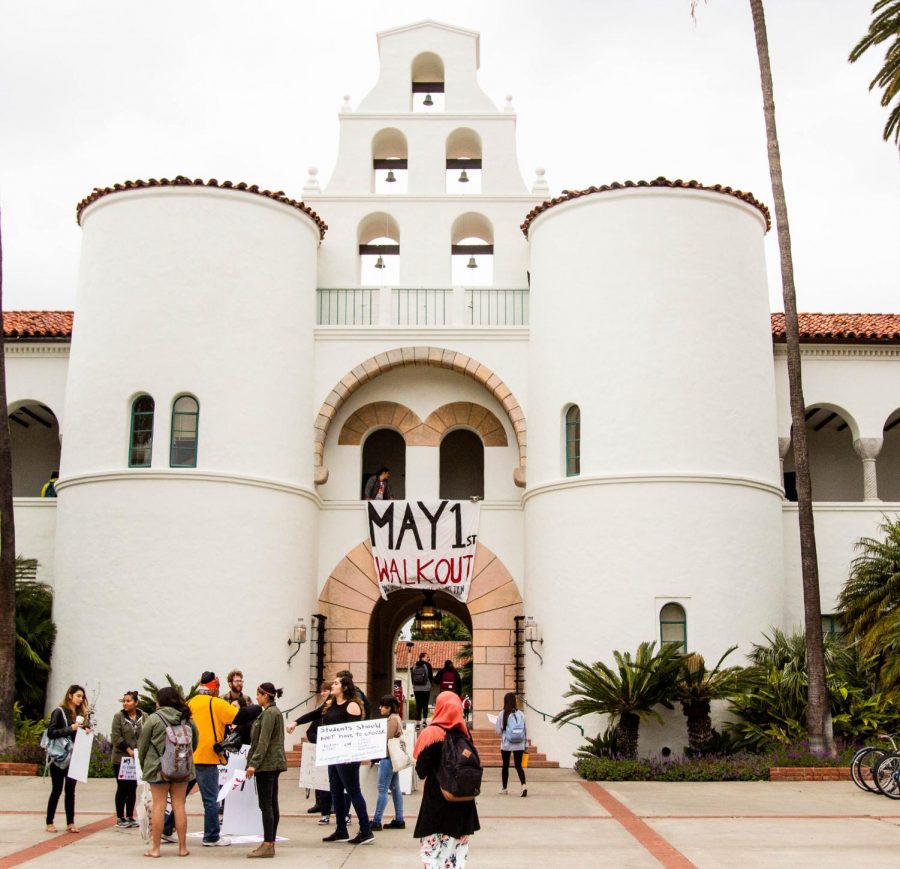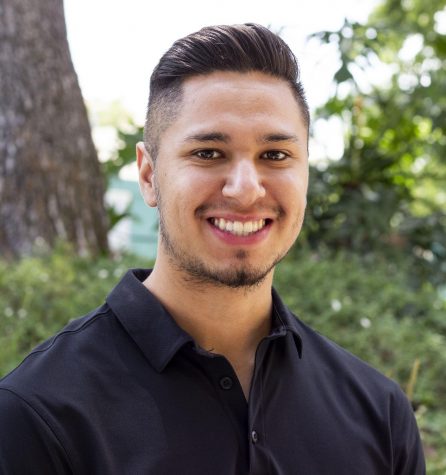About 30 San Diego State students protested outside of Hepner Hall on May 1 for higher wages and to bring attention to student food insecurity.
Social work sophomore Alexcia Lopez was one of the protesters advocating for higher pay in on-campus jobs. Lopez, who works on campus herself, said she’s gotten lucky with her wage, earning more working for the sociology department than some of her friends who also work on campus jobs.
But even then, Lopez said it’s still not enough to cover the costs of attending SDSU.
“It helps a little bit with tuition and books, but of course it doesn’t cover everything,” Lopez said.
There have been times when Lopez has struggled to afford to feed herself, saying she’s learned how to stretch her money.
Lopez isn’t the only student struggling to afford food. With tuition costs rising nationwide, food insecurity is becoming a common issue amongst college students.
The Washington Post recently reported on a survey done by Temple University and the Wisconsin HOPE lab where researchers found that 36 percent of students, surveyed from 66 universities, don’t get enough to eat.
Alexis Rodriguez, computer engineering senior, said his previous Aztec Shops job would give him a daily balance of around $6 to spend on a meal.
“I’ve gone hungry before. I remember there was a time where that’s all I would live off of for my meal (of the day),” Lopez said. “I don’t think that anyone should go through something like that.”
According to the website Zillow, average rent in San Diego is $2,629 while the minimum wage is $11.50.
Marlene Martinez, a who helped organized the walkout, outlined some of the other troubles students are faced with.
“(Some students) have to pick hours or work overtime, or choose between gas and food or gas and books,” Martinez said. “As students, we should just be worried about school, but instead we’re having to worry about whether we’re able to afford rent.”
A.S. President Chris Thomas, who said he’s has been through food insecurity in the past, said he wants to promote new programs like CalFresh, a federal program aimed at helping people struggling to afford buying meals.
“It’s a card that you can go literally anywhere, Trader Joe’s, Vons and be able to use a monthly allowance for food,” Thomas said.
Thomas said that this program will help students out more than the food pantry, which is hosted on Wednesdays from 10 a.m.-3 p.m. on the second level of the student union and on Thursdays at the farmers market from 10 a.m.-3 p.m.
In addition to food insecurity and campus living wages, students were also advocating for a sanctuary campus and for the university to take a stance on fascism.
Posters from white supremacy groups Identity Evropa and Patriot Front have been seen around campus, its members attempting to recruit students.
“Here at San Diego State there are so many different cultures, and I feel like (allowing these groups) to recruit on campus is just a sock in the face,” Martinez said.
Martinez said that while this protest happened at the end of the year, the coalition of students that organized this protest are already planning events for the upcoming year.
“What administration wants is for things to die down over the summer, which is not going to happen,” Martinez said.
Correction: An earlier version of this story mentioned that the food pantry at SDSU was only available to students once a week. It has since been change to reflect the correct hours of the food pantry.









